Art & Exhibitions
12 Must-See Museum Shows in the U.S. This Fall, From a Retrospective of Ed Ruscha to Breathtaking Botticellis
Here's a round-up of what you can look forward to.
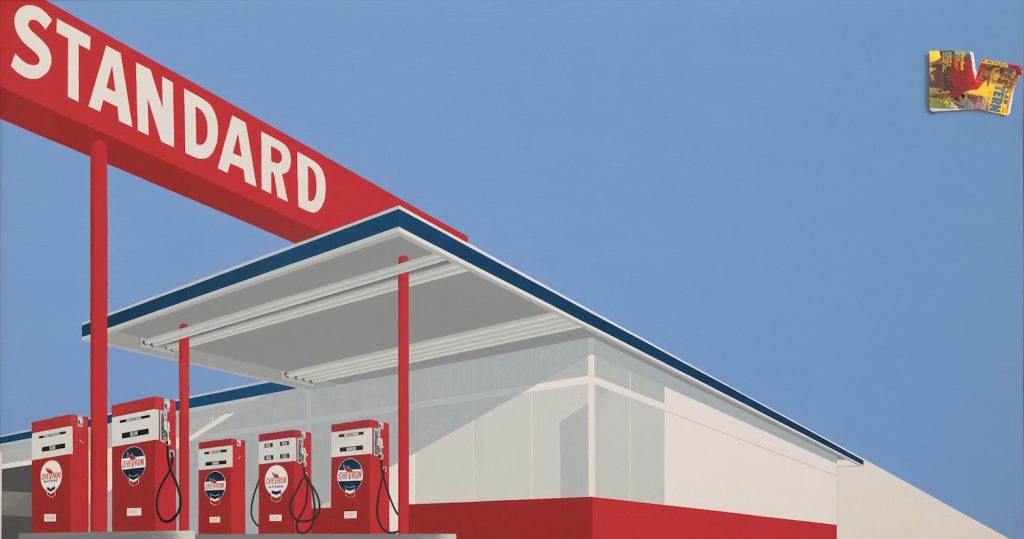
Here's a round-up of what you can look forward to.

Artnet News

Museums across the U.S. are busily ramping up for the fall season, with exhibitions celebrating both familiar and lesser-known names and movements. There is, in short, a lot to look forward to, with fresh scholarship around old favorites and discoveries from under-studied milieus. Here, our shortlist of shows to carry you straight through to the new year.
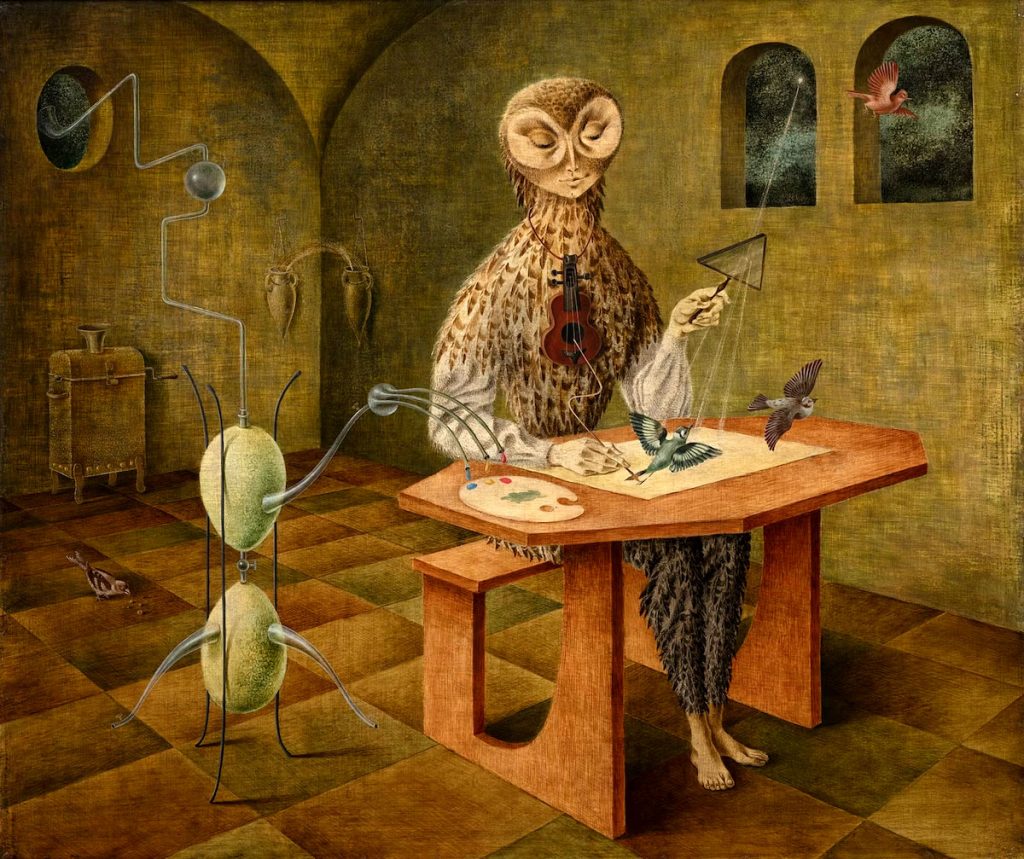
Creación de las aves (Creation of the Birds) (1957). © 2023 Remedios Varo, Artists Rights Society (ARS), New York/VEGAP, Madrid.
During her lifetime, Spanish-born Surrealist artist Remedios Varo was hailed as a cultural treasure in her adopted homeland of Mexico, where she had fled at the dawn of World War II in Europe. Throughout the 1950s up to her death in 1963, Varo created hypnotic Surrealist visions that blended imagery drawn from mysticism, the tarot, and psychology. Varo has risen to global acclaim over the past 15 years as art historians reassess the legacies of women artists in the Surrealist movement. “Science Fictions” marks the first museum exhibition devoted to Varo in the United States since 2000. This luminous exhibition brings together 20 paintings as well as materials from the artist’s archive, including notebooks, sketches, and personal possessions, that offer insight into Varo’s mind and the hidden orders and systems she saw in the world all around us. One of the gems of the exhibition Harmony pictures a composer seeking an “invisible thread that unites all things.” —Katie White
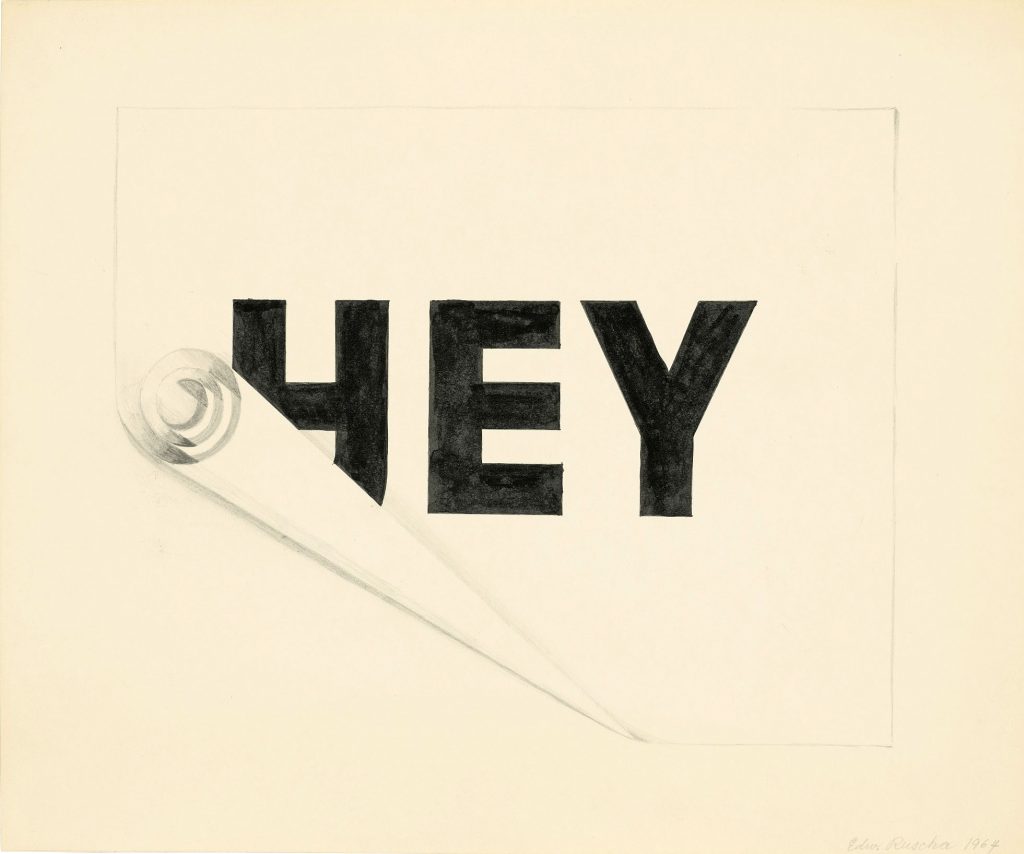
Ed Ruscha, Hey with Curled Edge (1964). Courtesy of MoMA.
The show is billed as the most comprehensive presentation of the beloved artist’s work to date, and—somewhat curiously—his first solo exhibition at MoMA. It spans 65 years of the artist’s illustrious career and reflects his cross-disciplinary approach, encompassing 200 works produced from 1958 to the present. Fans of Ruscha will not be surprised to see the full scope of his output—paintings, drawings, prints, film, photography, artist’s books, and installations—displayed according to a loose chronology. Of special note is the New York debut of the artist’s rarely realized 1970 installation Chocolate Room, which lines an entire gallery with sheets of paper coated in the titular confection. —Eileen Kinsella
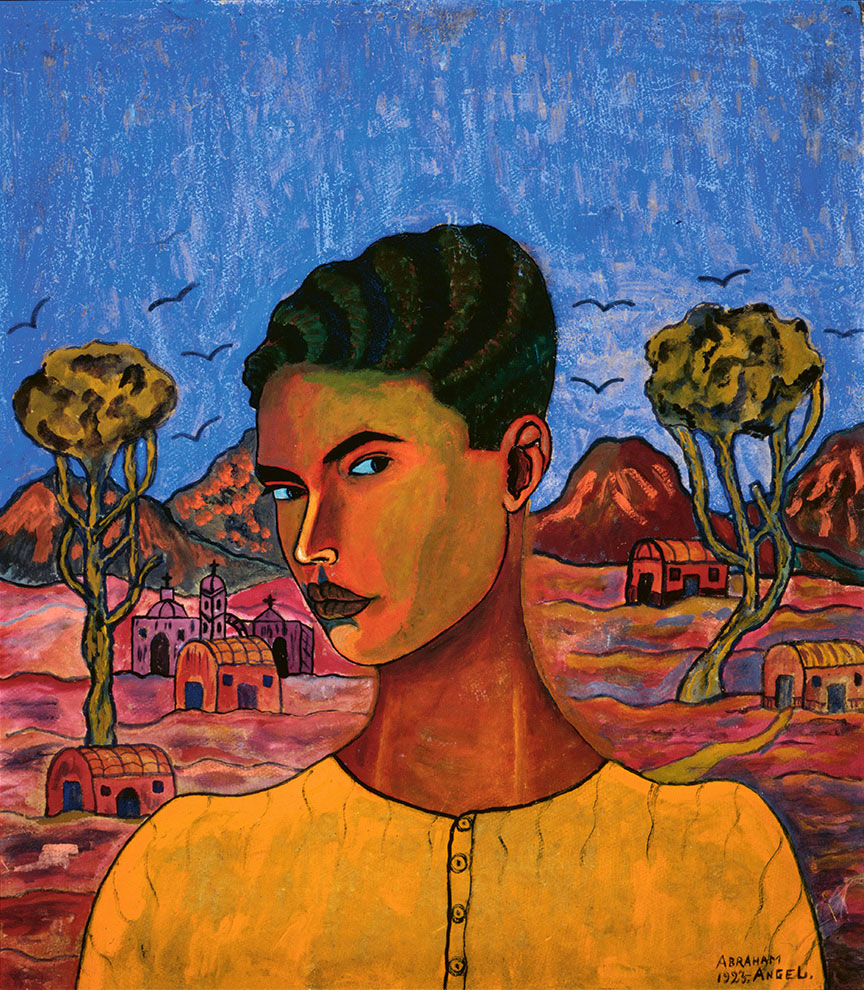
Abraham Ángel, Self-Portrait / Autorretrato (1923). Museo Nacional de Arte. INBAL/Secretaría de Cultura, Mexico City.
It’s been nearly 100 years since Abraham Ángel painted his last canvas at just 19 years of age, shocking the Mexican art world of the 1920s. Although his artistic legacy has often been overshadowed by the circumstances surrounding his death, a new show at the Dallas Museum of Art makes the case that Mexican Modernism would not have been the same without the efforts—however brief—of the young artist, who channeled a newfound vitality in the 24 total works he produced in three years, four of which are thought to be lost. This important survey of Ángel’s oeuvre is the first of its kind in more than 35 years and the first dedicated exhibition of his paintings in the United States, exposing fresh audiences to the forever-rising art star. —Lee Carter
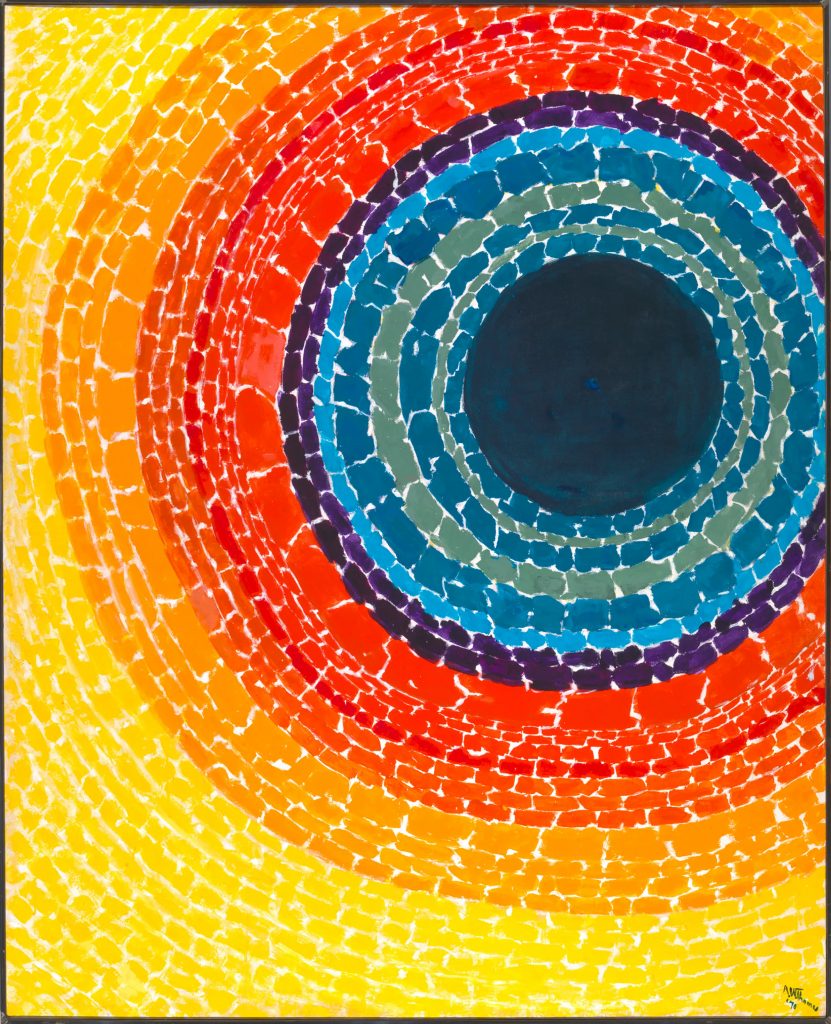
Alma Thomas, The Eclipse (1970). Collection of the Smithsonian American Art Museum, Washington, D.C.
Alma Thomas is one of those women artists whose profile has risen considerably in recent years—thanks in large part to the Obamas hanging one her paintings at their apartment in the White House in 2009. But while she had languished in relative obscurity following her death in 1978, the Smithsonian American Art Museum was well ahead of the game, acquiring no less than a dozen works by the artist during Thomas’s lifetime, plus 13 she bequeathed to the institution upon her death. Now, the museum is staging a traveling show of Thomas’s luminous color field paintings that also explores her methods and techniques, which remained innovative even as her health declined. —Sarah Cascone
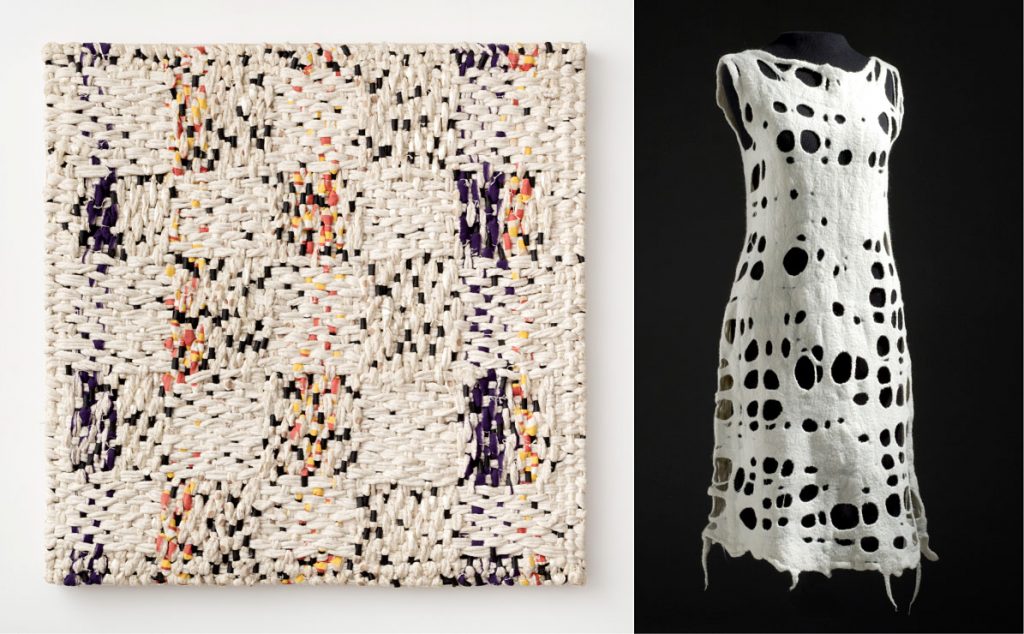
Left: Ed Rossbach, Damask Waterfall (1977). Photo: © Charles Benton. Courtesy The Artists’ Institute. Right: Andrea Zittel, White Felted Dress #3 (2002). © Andrea Zittel, photo © Museum Associates. Courtesy of LACMA.
With over 150 works by artists around the world, the refreshingly brainy exhibition “Woven Histories” examines the little-understood intersection between abstract art and woven textiles—as well as pre-loom crafts such as basketry, knotting, and netting—over the past century, and their impact on society and beyond. While the connection may at first seem threadbare, the show argues that each is partially responsible for the other’s existence; they are inextricably enlaced with each other. “Much is telegraphed consciously and unconsciously through the significations of cloth,” posits Lynne Cooke, a senior curator of modern art at Washington’s National Gallery of Art, which helped organized the show. “Clothing underpins the myriad forms of art-making showcased in this exhibition.” —Lee Carter
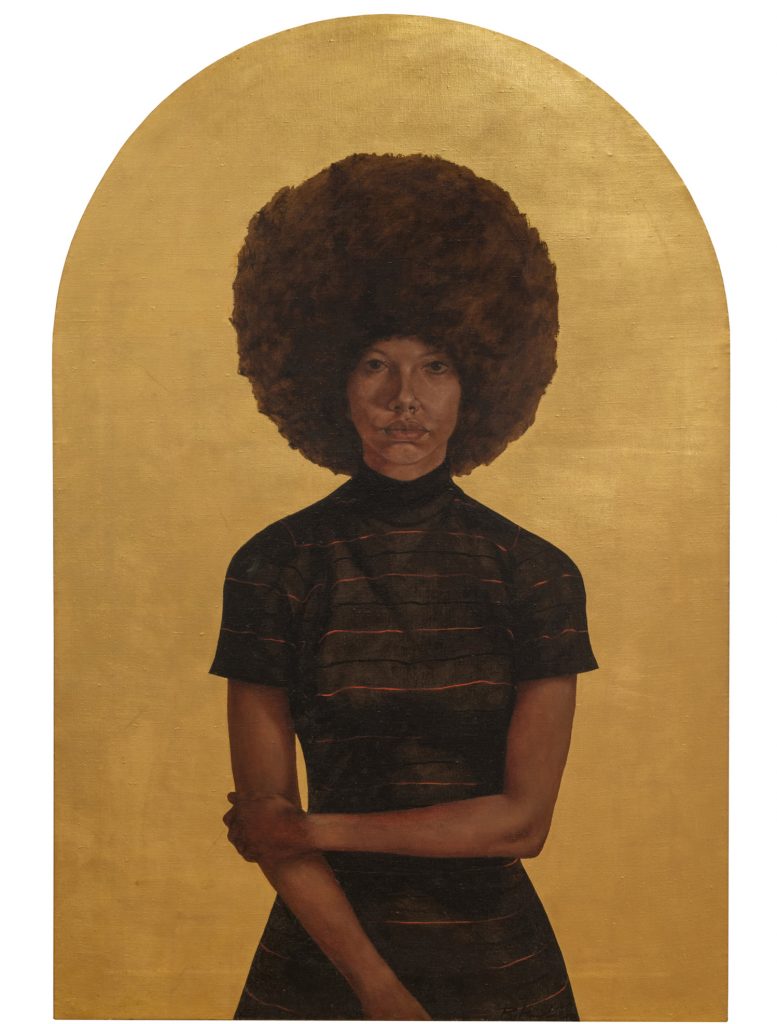
Barkley L. Hendricks, Lawdy Mama (1969). The Studio Museum in Harlem; gift of Stuart Liebman in memory of Joseph B. Liebman. © Barkley L. Hendricks. Courtesy of the estate of Barkley L. Hendricks and Jack Shainman Gallery, New York.
This presentation of 14 early paintings by the pioneering American artist celebrates the remarkable figurative work of Hendricks through a focused group of portraits drawn from private and public collections. Starting in the late 1960s, Hendricks revolutionized contemporary portraiture by uniting portraits of Black figures with traditions of European painting. Here’s a serendipitous twist: Hendricks was one of many artists inspired by the Frick and counted it as one of his favorite museums, spending hours in the galleries observing iconic portraits by Rembrandt, Bronzino, Van Dyck, and others. —Eileen Kinsella
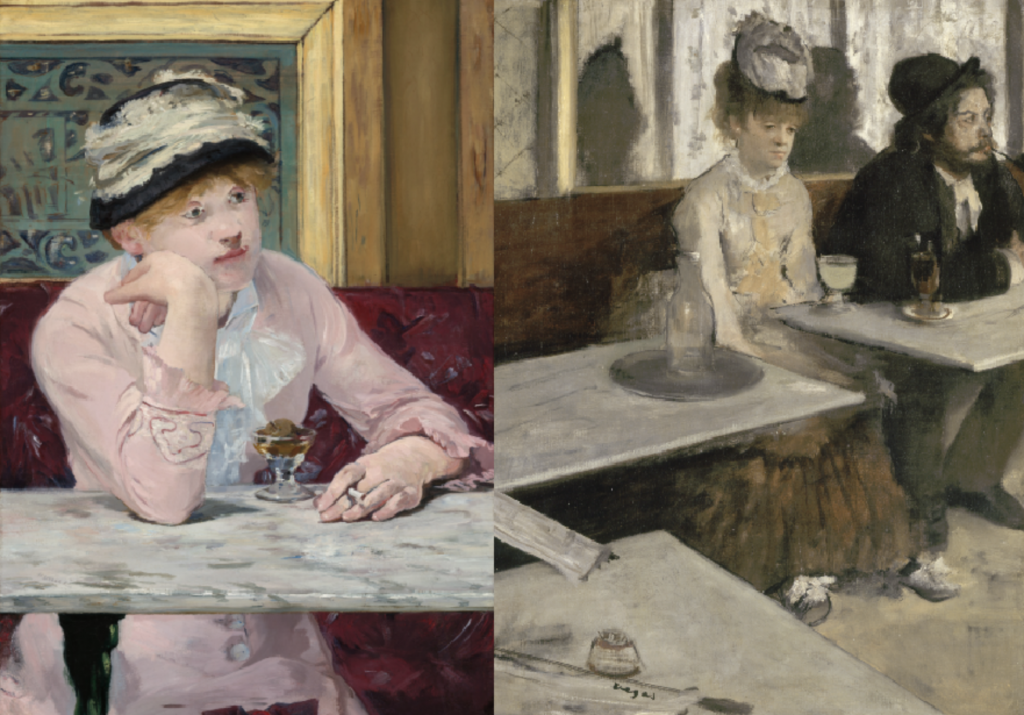
Left: Edouard Manet, La prune (1877). Collection of the National Gallery of Art, Washington, D.C., Mr. and Mrs. Paul Mellon. Courtesy of the National Gallery of Art, Washington. Right: Edgar Degas Dans un café or L’absinthe (1875–76). Collection of the Musée d’Orsay, Paris. © Musée d’Orsay, Dist. RMN-Grand Palais/Patrice Schmidt.
This deep dive into the friendship—and rivalry—between Édouard Manet and Edgar Degas comes to the Met from the Musée d’Orsay in Paris. It pairs masterpieces by the two French artists dealing with similar subject matter in order to highlight the similarities and differences between their artistic approaches. In addition to 150 paintings and works on paper, the blockbuster show will provide additional context about the two men’s friends, family, and the intellectual milieu in which they created side by side. —Sarah Cascone
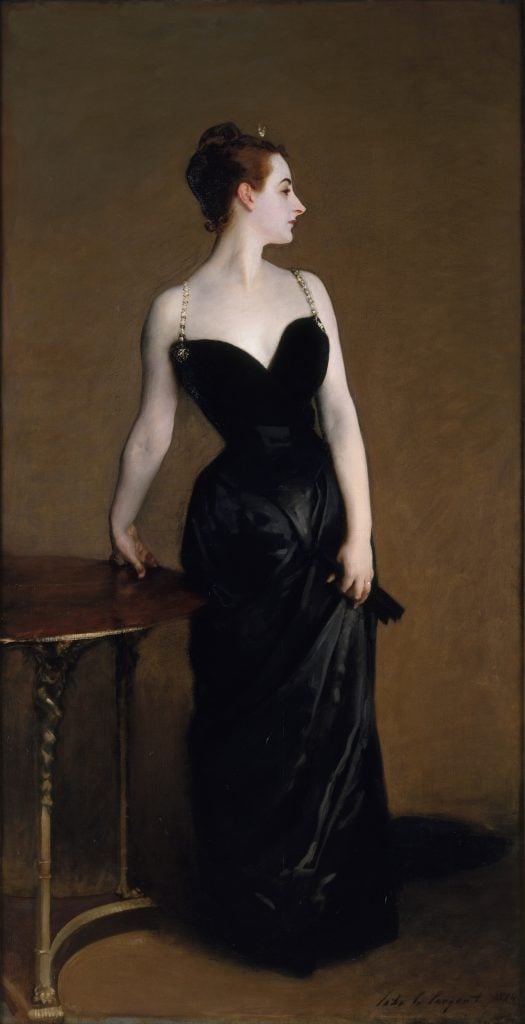
John Singer Sargent, Madame X (Madame Pierre Gautreau) (1883–84). Courtesy of the Metropolitan Museum of Art, Arthur Hoppock Hearn Fund, 1916.
John Singer Sargent is widely regarded as the greatest portraitist of his era. His elegant portraits of his wealthy clientele were particularly coveted for their sartorial stylings and his sumptuous depictions of fabrics. This ravishing exhibition of approximately 50 paintings delves into Sargent’s eye for style and the ways the American artist sometimes dressed and often modified his sitter’s costumes to exploit their effects. Among the highlights of the exhibition are fashion-forward paintings such as Madame X, Lady Agnew, and Dr. Pozzi at Home. Visitors will also be able to see several of the original garments worn by sitters alongside their portraits. —Katie White
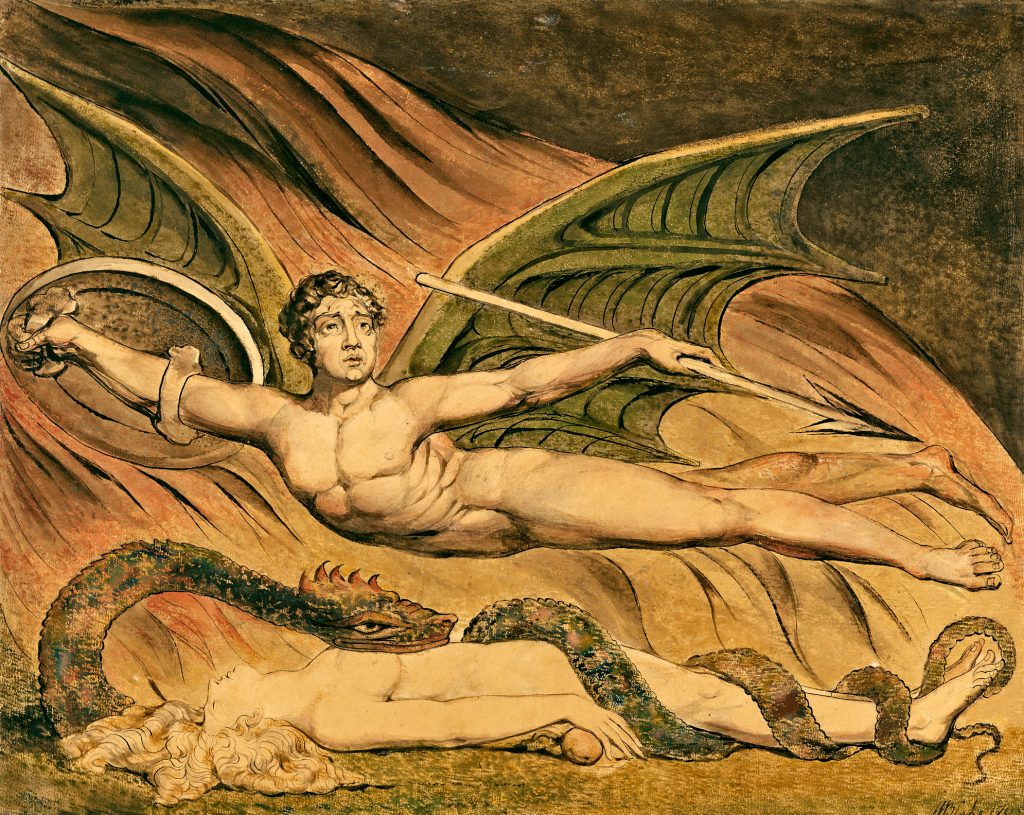
William Blake, Satan Exulting over Eve (1795). Courtesy of Getty Museum.
This major Blake retrospective, co-organized with the Tate, was a hit in London in 2019–2020, and the L.A. stop was delayed by the pandemic. But now it’s here, and the Romantic wild man William Blake (1757–1827) is always timely. Yes, this is the show that had the two museums team up with Apple to unleash Augmented Reality versions of Blake’s visions into the world—but don’t be put off by the gimmicks (though by all means enjoy them if that’s your thing). “William Blake: Visionary” promises to highlight Blake’s most celebrated works via a bevy of important international loans, exploring his innovations in printmaking, his fusion of poetry and graphic art, and his glorious and passionate cosmology that has enchanted generations of admirers. —Ben Davis
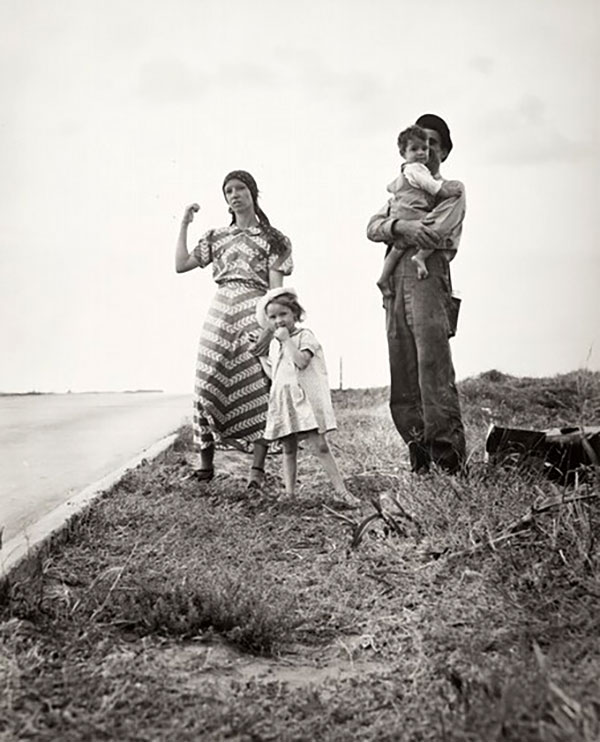
Dorothea Lange, Hitch-hiking from Joplin, Missouri, to a sawmill job in Arizona. On U.S. 66 near Weatherford, western Oklahoma (1938). Courtesy of National Gallery of Art.
Dorothea Lange is more than just Migrant Mother, her celebrated photo of poverty in California—but Migrant Mother does encapsulate something, specifically Lange’s ability to capture her subjects with directness, but in a way that also makes them represent something bigger and teases out a spirit of endurance and dignity. “Dorothea Lange: Seeing People” focuses on her rich black-and-white portraits made in the 1930s while she was working for the New Deal Farm Services Administration. Lange’s eye helped shape our memories of this era, so it’s amazing that the images still have so much power to move: from a grandfather solemnly hoisting his grandson on his shoulder at the Japanese internment camp at Manzanar; to an overhead shot of quiet, serious men waiting for unemployment relief; to a shot of a scrawny boy, child of impoverished tenant farmers in the Black Belt of Alabama, working the fields alone. Whenever I hear that government art support in the high New Deal era produced “no masterpieces,” I always reply by pointing to these images. —Ben Davis
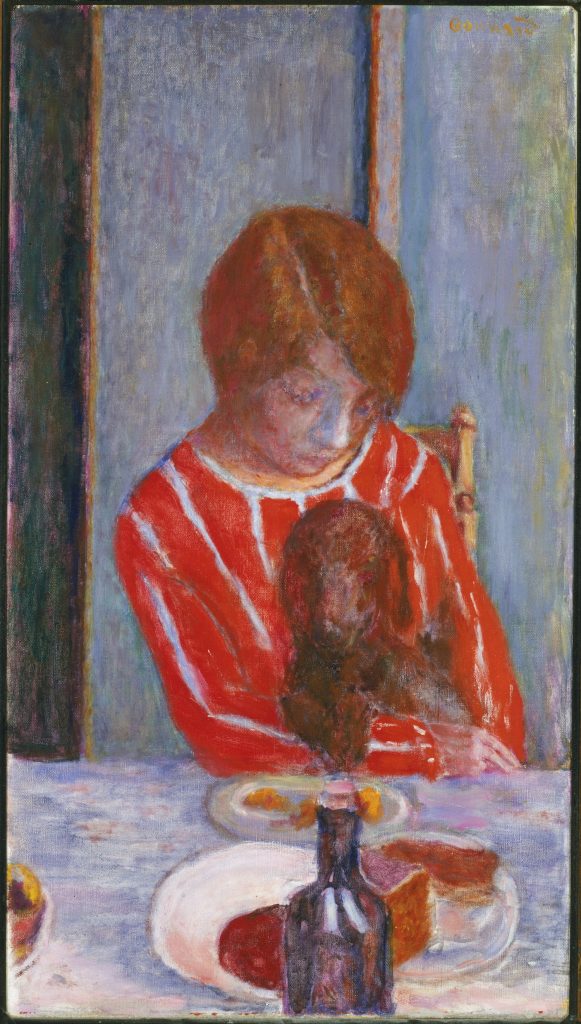
Pierre Bonnard, Woman with a Dog (1922). The Phillips Collection. © 2023 Artists Rights Society (ARS) New York.
The Kimbell’s first exhibition dedicated to the works of French painter Pierre Bonnard (1867–1947) was inspired by its 2018 acquisition of Landscape at Le Cannet (1928). The show will explore the various sensory realms that drove the painter’s creative practice—from the most public spaces to the most private. It’s comprised of roughly 70 of Bonnard’s best works that span the length of his career, and will reunite celebrated works from museums in Europe and the United States, as well as many unfamiliar to the public from private collections around the world. —Eileen Kinsella
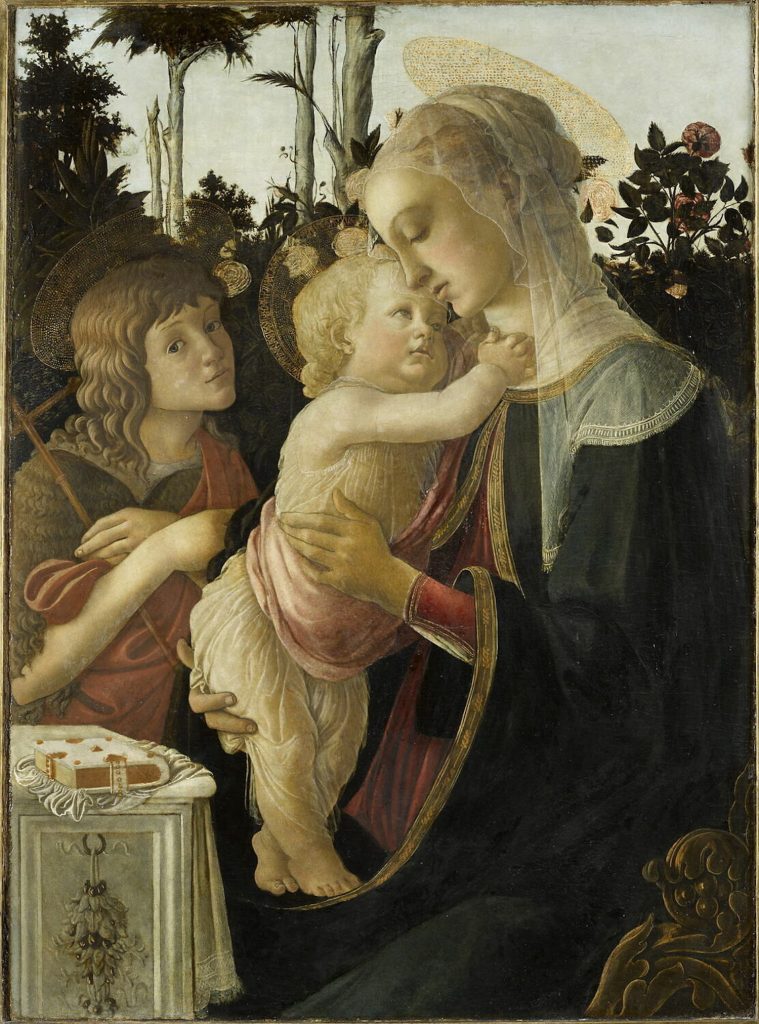
Sandro Botticelli, The Virgin and Child with the Young Saint John the Baptist (‘Madonna of the Rose Garden’) (ca. 1468). Musée du Louvre, Département des Peintures, inv. 286 / L 3936 © RMN Grand Palais. Photo: Tony Querrec.
This show of 27 drawings is the first major museum show devoted to the quintessential Renaissance artist’s work. It will reunite rare works from across the U.S. and Europe, presented exclusively at the Legion of Honor—and is the first exhibition to explore the central role that drawing played in Botticelli’s art and workshop practice. The artist is best known for some of the world’s greatest paintings, including La Primavera (1477–1482) and The Birth of Venus (1484–1486), and he has inspired innumerable artists past and present. —Eileen Kinsella